#charlotte reblogs!
Text
"the time has come for your interview! ready to be a star?" est: 09/18/23

For all your Teyvat-official account drama and weekly shenanigans, tune in every week for a post written by none other than yours truly on how the week went! Except, it's all recapped, here, on the Steambird!
(Ahem. So in other words, hey, yknow those Genshin official accounts? ex @niloupalata or @cyno-the-adventurer, well, for relatively inactive accounts like wanderer or albedo who don’t know what has happened and want to catch up on posting, I’m your gal! Also for normal people who don’t want to just read all those text posts. Anyway, tune in for summaries, special favorite excerpts of mine, etc. I take suggestions, so feel free to slide into the ask box!)
from which was once an individual person scrambling to update every week (and consistently failing) is now a team(of currently one because charlotte is not a good manager) ready and working hard to present to you: the steambird.
the steambird's team applications here
updates on thursdays - mod has succumbed and given up a attempt to have a sort of schedule—she kinda just posts whenever she wants now send help she is a horrible manager
The original mod would also recommend for the full steambird experience to go on the desktop website, where you can find all the articles. but if that's not possible, you can find everything here. This also includes interviews. Every single issue. in order. Even the latest issue this week!
tags:
steambird specials <- special articles that I will tend to particularly write if there was an INCREDIBLY packed day. Which, I haven't done in a while, but I've got one or two in that section that were pretty good. Consider giving them a read!
the steambird <- your regular weekly updates, brought to you by the steambird mods!
steambird updates <- should the blog undergo any major changes or something like that, it'll be under this tag.
charlotte's loveliest dearest informants <- normal anons sliding into my ask box to deliver info.. I love you all!
charlotte answers <- Charlotte answering any post in character. Though, she won't be answering on any issues.
question for the writer <- Charlotte answers any asks.
exclusive interviews ! <- though relatively unhumorous and mostly crack, (when I feel like it,) Charlotte will interview figures from the article to include! (separate posts)
steambird polls! <- Polls on feedback needed for the Steambird :)
charlotte reblogs! <- mod reblogs things mod thinks deserve attention- whether it's important announcements to be wary of or just pretty art.

the old pinned post
Once again, you can find all my issues(+interview(s)) HERE!

also my DMs are broken if you would like to contact me you can either dm @charnverite or my discord, livingcouch.
#charlotte answers#question for the writer!#charlotte's loveliest dearest informants#the steambird#steambird specials#steambird updates#exclusive interviews !#steambird polls!#charlotte reblogs!
44 notes
·
View notes
Text
Frev appearance descriptions masterpost

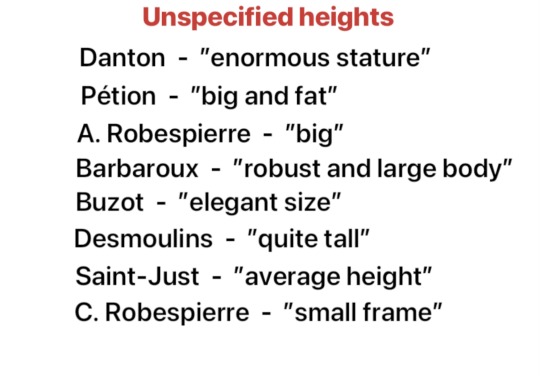

Jean-Paul Marat — In Histoire de la Révolution française: 1789-1796 (1851) Nicolas Villiaumé pins down Marat’s height to four pieds and eight pouces (around 157 cm). This is a somewhat dubious claim considering Villiaumé was born 26 years after Marat’s death and therefore hardly could have measured him himself, but we do know he had had contacts with Marat’s sister Albertine, so maybe there’s still something to this. That Marat was short is however not something Villaumé is alone in claiming. Brissotwrote in his memoirs that he was ”the size of a sapajou,” the pamphlet Bordel patriotique (1791) claimed that he had ”such a sad face, such an unattractive height,” while John Moore in A Journal During a Residence in France, From the Beginning of August, to the Middle of December, 1792 (1793) documented that ”Marat is little man, of a cadaverous complexion, and a countenance exceedingly expressive of his disposition. […] The only artifice he uses in favour of his looks is that of wearing a round hat, so far pulled down before as to hide a great part of his countenance.” In Portrait de Marat(1793) Fabre d’Eglantine left the following very detailed description: ”Marat was short of stature, scarcely five feet high. He was nevertheless of a firm, thick-set figure, without being stout. His shoulders and chest were broad, the lower part of his body thin, thigh short and thick, legs bowed, and strong arms, which he employed with great vigor and grace. Upon a rather short neck he carried a head of a very pronounced character. He had a large and bony face, aquiline nose, flat and slightly depressed, the under part of the nose prominent; the mouth medium-sized and curled at one corner by a frequent contraction; the lips were thin, the forehead large, the eyes of a yellowish grey color, spirited, animated, piercing, clear, naturally soft and ever gracious and with a confident look; the eyebrows thin, the complexion thick and skin withered, chin unshaven, hair brown and neglected. He was accustomed to walk with head erect, straight and thrown back, with a measured stride that kept time with the movement of his hips. His ordinary carriage was with his two arms firmly crossed upon his chest. In speaking in society he always appeared much agitated, and almost invariably ended the expression of a sentiment by a movement of the foot, which he thrust rapidly forward, stamping it at the same time on the ground, and then rising on tiptoe, as though to lift his short stature to the height of his opinion. The tone of his voice was thin, sonorous, slightly hoarse, and of a ringing quality. A defect of the tongue rendered it difficult for him to pronounce clearly the letters c and l, to which he was accustomed to give the sound g. There was no other perceptible peculiarity except a rather heavy manner of utterance; but the beauty of his thought, the fullness of his eloquence, the simplicity of his elocution, and the point of his speeches absolutely effaced the maxillary heaviness. At the tribune, if he rose without obstacle or excitement, he stood with assurance and dignity, his right hand upon his hip, his left arm extended upon the desk in front of him, his head thrown back, turned toward his audience at three-quarters, and a little inclined toward his right shoulder. If on the contrary he had to vanquish at the tribune the shrieking of chicanery and bad faith or the despotism of the president, he awaited the reéstablishment of order in silence and resuming his speech with firmness, he adopted a bold attitude, his arms crossed diagonally upon his chest, his figure bent forward toward the left. His face and his look at such times acquired an almost sardonic character, which was not belied by the cynicism of his speech. He dressed in a careless manner: indeed, his negligence in this respect announced a complete neglect of the conventions of custom and of taste and, one might almost say, gave him an air of ressemblance.”
Albertine Marat — both Alphonse Ésquiros and François-Vincent Raspail who each interviewed Albertine in her old age, as well as Albertine’s obituary (1841) noted a striking similarity in apperance between her and her older brother. Esquiros added that she had ”two black and piercing eyes.” A neighbor of Albertine claimed in 1847 that she had ”the face of a man,” and that she had told her that ”my comrades were never jealous of me, I was too ugly for that” (cited in Marat et ses calomniateurs ou Réfutation de l’Histoire des Girondins de Lamartine (1847) by Constant Hilbe)
Simonne Evrard — An official minute from July 1792, written shortly after Marat’s death, affirmed the following: “Height: 1m, 62, brown hair and eyebrows, ordinary forehead, aquiline nose, brown eyes, large mouth, oval face.” The minute for her interrogation instead says: “grey eyes, average mouth.”Cited in this article by marat-jean-paul.org. When a neighbor was asked whether Simonne was pretty or not around two decades after her death in 1824, she responded that she was ”très-bien” and possessed ”an angelic sweetness” (cited in Marat et ses calomniateurs ou Réfutation de l’Histoire des Girondins de Lamartine (1847) by Constant Hilbe) while Joseph Souberbielle instead claimed that ”she was extremely plain and could never have had any good looks.”
Maximilien Robespierre — The hostile pampleth Vie secrette, politique et curieuse de M. J Maximilien Robespierre… released shortly after thermidor by L. Duperron, specifies Robespierre’s hight to have been ”five pieds and two or three pouces” (between 165 and 170 cm). He gets described as being ”of mediocre hight” by his former teacher Liévin-Bonaventure Proyart in 1795, ”a little below average height” by journalist Galart de Montjoie in 1795, ”of medium hight” by the former Convention deputy Antoine-Claire Thibaudeau in 1830 and ”of middling form” by his sister in 1834, but ”of small size” by John Moore in 1792 and Claude François Beaulieu in 1824. The 1792 pampleth Le véritable portrait de nos législateurs… wrote that Robespierre lacked ”an imposing physique, a body à la Danton,”supported by Joseph Fiévée who described him as ”small and frail” in 1836, and Louis Marie de La Révellière who said he was ”a physically puny man” in his memoirs published 1895. For his face, both François Guérin (on a note written below a sketch in 1791), Buzot in his Mémoires sur la Révolution française (written 1794), Germaine de Staël in her Considerations on the Principal Events of the French Revolution (1818), a foreign visitor by the name of Reichardt in 1792 (cited in Robespierre by J.M Thompson), Beaulieu and La Révellière-Lépeaux all agreed that he had a ”pale complexion.” Charlotte does instead describe it as ”delicate” and writes that Maximilien’s face ”breathed sweetness and goodwill, but it was not as regularly handsome as that of his brother,” while Proyart claims his apperance was ”entirely commonplace.” The foreigner Reichardt wrote Robespierre had ”flattened, almost crushed in, features,” something which Proyart agrees with, writing that his ”very flat features” consisted of ”a rather small head born on broad shoulders, a round face, an indifferent pock-marked complexion, a livid hue [and] a small round nose.” Thibaudeau writes Robespierre had a ”thin face and cold physiognomy, bilious complexion and false look,” Duperron that ”his colouring was livid, bilious; his eyes gloomy and dull,” something which Stanislas Fréron in Notes sur Robespierre (1794) also agrees with, claiming that ”Robespierre was choked with bile. His yellow eyes and complexion showed it.” His eyes were however green according to Merlin de Thionville and Guérin while Proyart insists they were ”pale blue and slightly sunken.” Etienne Dumont, who claimed to have talked to Robespierre twice, wrote in his Souvernirs sur Mirabeau et sur les deux premières assemblées législatives (1832) that ”he had a sinister appearance; he would not look people in the face, and blinked continually and painfully,” and Duperron too insists on ”a frequent flickering of the eyelids.” Both Fréron, Buzot, Merlin de Thionville, La Révellière, Louis Sébastien Mercier in his Le Nouveau Paris (1797) and Beffroy de Reigny in Dictionnaire néologique des hommes et des choses ou notice alphabétique des hommes de la Révolution, qui ont paru à l’Auteur les plus dignes d’attention… (1799) made the peculiar claim that Robespierre’s face was similar to that of a cat. Proyart, Beaulieu and Millingen all wrote that it was marked by smallpox scars, ”mediocretly” according to Proyart, ”deeply” according to the other two. Proyart also writes that Robespierre’s hair was light brown (châtain-blond). He is the only one to have described his hair color as far as I’m aware.
For his clothes, both Montjoie, Louis-Sébastien Mercier in 1801, Helen Maria Williams in 1795, Duperron, Millingen and Fiévée recall the fact that Robespierre wore glasses, the first two claiming he never appeared in public without them, Duperron that he ”almost always” wore them, and Millingen that they were green. Pierre Villiers, who claimed to have served as Robespierre’s secretary in 1790, recalled in Souvenirs d'un deporté (1802) that Robespierre ”was very frugal, fastidiously clean in his clothes, I could almost say in his one coat, which was was of a dark olive colour,” but also that ”He was very poor and had not even proper clothes,” and even had to borrow a suit from a friend at one point. Duperron records that ”[Robespierre’s] clothes were elegant, his hair always neat,” Millingen that ”his dress was careful, and I recollect that he wore a frill and ruffles, that seemed to me of valuable lace,”Charlotte that ”his dress was of an extreme cleanliness without fastidiousness,” Williams that he ”always appeared not only dressed with neatness, but with some degree of elegance, and while he called himself the leader of the sans-culottes, never adopted the costume of his band. His hideous countenance […] was decorated with hair carefully arranged and nicely powdered,” Fiévée that Robespierre in 1793 was ”almost alone in having retained the costume and hairstyle in use before the Revolution,” something which made him ressemble ”a tailor from the Ancien régime,” Thibadeau that ”he was neat in his clothes, and he had kept the powder when no one wore it anymore,” Germaine de Staël that ”he was the only person who wore powder in his hair; his clothes were neat, and his countenance nothing familiar,” Révellière writes that Robespierre’s voice was ”toneless, monotonous and harsh,” Beaulieu that it ”was sharp and shrill, almost always in tune with violence,” and Thinadeau that his ”tone” was ”dogmatic and imperious.”
Augustin Robespierre — described as ”big, well formed, and [with a] face full of nobility and beauty” in the memoirs of his sister Charlotte.
Charlotte Robespierre — an anonymous doctor who claimed to have run into Charlotte in 1833, the year before her death, described her as ”very thin.” Jules Simon, who reported to have met her the following year, did him too describe her as ”a very thin woman, very upright in her small frame, dressed in the antique style with very puritanical cleanliness.”
Camille Desmoulins — described as ”quite tall, with good shoulders” in number 16 of the hostile journal Chronique du Manège (1790). Described as ugly by both said journal, the journal Journal Général de la Cour et de la Ville in 1791, his friend François Suleau in 1791, former teacher Proyart in 1795, Galart de Montjoie in 1796, Georges Duval in 1841, Amandine Rolland in 1864 (she does however add that it was ”with that witty and animated ugliness that pleases”) and even himself in 1793. Proyart describes his complexion as ”black,” Duval as ”bilious.” Both of them agree in calling his eyes ”sinister.” Duval also claims that Desmoulins’ physiognomy was similar to that of an ospray. Montjoie writes that Desmoulins had ”a difficult pronunciation, a hard voice, no oratorical talent…”, Proyart that ”he spoke very heavily and stammered in speech” and Camille himself that he has ”difficulty in pronunciation” in a letter dated March 1787 and confesses ”the feebleness of my voice and my slight oratorical powers” in number 4 of the Vieux Cordelier. In his very last letter to his wife, dated April 1 1794, Desmoulins reveals that he wears glasses.
Lucile Desmoulins — The concierge at the Sainte-Pélagie prison documented the following when Lucille was brought before him on April 4 1794: ”height of five pieds and one and a half pouce (166 cm). Brown hair, eyebrows and eyes. Middle sized nose and mouth. Round face and chin. Ordinary front. A mark above the chin on the right.” Cited in Camille et Lucile Desmoulins: un rêve de république (2018). Described as beautiful by the journal Journal Général de la Cour et de la Ville in 1791 (it specifies her to be ”as pretty as her husband is ugly”), former Convention deputy Pierre Paganel in 1815, Louis Marie Prudhomme in 1830, Amandine Rolland in 1864 and Théodore de Lameth (memoirs published 1913).
Georges Danton — Described as having an ugly face by both Manon Roland in 1793, Vadier in 1794, the anonymous pamphlet Histoire, caractère de Maximilien Robespierre et anecdotes sur ses successeurs in 1794, Louis-Sébastien Mercier in 1797, Antoine Fantin-Desodoards in 1807, John Gideon Millingen in 1848, Élisabeth Duplay Lebas in the 1840s, the memoirs (1860) of François-René Chateaubriand (he specifies that Danton had ”the face of a gendarme mixed with that of a lustful and cruel prosecutor”) as well as the Mémoires de la Societé d’agriculture, commerce, sciences et arts du department de la Marse, Chalons-sur-Marne (1862). As reason for this ugliness, Millingen lifts his ”course, shaggy hair” (that apparently gave him the apperance of a ”wild beast”), the fact he was deeply marked with small-poxes, and that his eyes were unusually small (”and sparkling in surrounding darkness”), while Chateaubriand instead underlines that he was ”snub-nosed,” with ”windy nostrils [and] seamed flats.” Mercier writes that Danton’s face was ”hideously crushed.” The former Convention deputy Alexandre Rousselin (1774-1847) reported in his Danton — Fragment Historique that Danton developed a lip deformity after getting gored by a bull as a baby, had his nose crushed by another bull, got trampled in the face by a group of pigs and finally survived ”a very serious case of smallpoxes, accompanied by purpura.” Vadier claims that Danton possessed a ”robust form, colossal eloquence,” the anonymous pamphlet that ”he was very strong, he said himself that he had athletic forms,” Desodoards that he ”held the nature of athletic and colossal forms,” Chateaubriand that he was ”a vandal in the size of Goth” (don’t know who he’s referring to), Pierre Paganel (in Essai historique et critique sur la révolution française: ses causes, ses résultats, avec les portraits des hommes les plus célèbres (1815) volume 2, page) that he was of an ”enormous stature,” while the pamphlet described him as a ”gigantic orator” whose voice ”shook the vaults of the hall.” René Levasseur in 1829, Millingen, Paganel and Desodoards all agreed with this, the first three writing that Danton possessed a ”stentorian voice,” the latter that he had ”a very strong voice, without being sonorous or flexible.” In her memoirs (1834) Charlotte Robespierre claims that ”[Danton] did not at all conserve the dignity suited to the representative of a great people in his manners; his toilette was in disorder.”
Louis Antoine Saint-Just — In Saint-Just (1985) Bernard Vinot writes that Saint-Just’s childhood friend Augustin Lejeune recalled his “honest physiognomy,” and that his sister Louise would evoke her brother’s ”great beauty” for her grandchildren (I unfortunately can’t find the original sources here), while the elderly Élisabeth Le Bas too stated that ”he was handsome, Saint-Just, with his pensive face, on which one saw the greatest energy, tempered by an air of indefinable gentleness and candor” (testimony found in Les Carnets de David d’Angers (1838-1855) by Pierre-Jean David d’Angers, cited in Veuve de Thermidor: le rôle et l'influence d'Élisabeth Duplay-Le Bas (1772-1859) sur la mémoire et l'historiographie de la Révolution française (2023) by Jolène Audrey Bureau, page 127). In Souvenirs de la révolution et de l’empire, Charles Nodier (who was twelve years old when he met Saint-Just…) agrees in calling him ”handsome,” but adds that he ”was far from offering this graceful combination of cute features with which we have seen it endowed by the euphemistic pencil of a lithograph,” had an ”ample and rather disproportionate chin,” that ”the arc of his eyebrows, instead of rounding into smooth and regular semi-circles, was closer to a straight line, and its interior angles, which were bushy and severe, merged into one another at the slightest serious thought that one saw pass on his forehead”and finally that ”his soft and fleshy lips indicated an almost invincible inclination to laziness and voluptuousness.” How would you know what his lips were like, Nodier. In Essai historique et critique sur la révolution française (1815) Pierre Paganel writes that Saint-Just had ”regular features and austere physiognomy.” He describes his complexion as ”bilious” while Nodier calls it ”pale and grayish, like that of most of the active men of the revolution.” Similar to Élisabeth’s description, Nodier writes that Saint-Just’s eyes were big and ”usually thoughtful,” while Paganel instead writes they were ”small and lively.” According to Paganel, Saint-Just had a ”healthy body [and] proportions which expressed strength,” while Saint-Just’s colleague Levasseur de la Sarthe instead wrote in his memoirs that he was ”weak in body, to the point of fearing the whistling of bullets.” Finally, Paganel also gives the following details: ”average height, large head, thick hair, disdainful gaze, strong but veiled voice, a general tinge of anxiety, the dark accent of concern and distrust, an extreme coldness in tone and manners.” In Lettre de Camille Desmoulins, député de Paris à la Convention, August général Dillon en prison aux Madelonettes (1793) Desmoulins jokingly writes that ”one can see by [Saint-Just’s] gait and bearing that he looks upon his own head as the corner-stone of the Revolution, for he carries it upon his shoulders with as much respect and as if it was the Sacred Host.” In Histoire de la Révolution française(1878), Jules Michelet claims that Élisabeth Le Bas had told him that this portrait, depicting Saint-Just as having ”a very low forehead, [with] the top of his head flattened, so that his hair, without being long, almost touched his eyes,” was similar to what he had looked like.
Jacques-Pierre Brissot — The following was documented after Brissot had been arrested at Moulins on June 10 1793 — ”height of five pieds (162 cm), a small amount of flat dark brown hair, eyebrows of the same color, high forehead and receding hairline, gray-brown, quite large and covered eyes, long and not very large nose, average mouth, long chin with a dimple, black beard, oval face narrow at the bottom” (cited in J.-P. Brissot mémoires (1754-1793); [suivi de] correspondance et papiers (1912)). In Journal During a Residence in France, from the Beginning of August, to the Middle of December, 1792John Moore described Brissot as ”a little man, of an intelligent countenance, but of a weakly frame of body” and claimed that a person had told him that Brissot had told him that he is ”of so feeble a constitution” that he won’t be able to put up any resistance was someone try to assassinate him.
Jérôme Pétion — described as ”big and fat” (grand et gros) by Louis-Philippe in 1850 (cited in The Croker Papers: the Correspondence and Diaries of the late right honourable John Wilson Croker… (1885) volume 3, page 209). Manon Roland wrote in her memoirs that Pétion ”had nothing to regret physically; his size, his face, his gentleness, his urbanity, speak in his favor” as well as that he ”spoke fairly well,” a descriptions which Louis Marie Prudhomme partly agreed with, himself recording that Pétion ”had a proud countenance, a fairly handsome face, an affable look, a gentle eloquence, movements of talent and address; but his manners were composed, his eyes were dull, and he had something glistening in his features which repelled confidence” in Paris pendant le révolution (1789-1798) ou le nouveau Paris (1798). In Quelques notices pour l’histoire, et le récit de mes périls depuis le 31 mai 1793 (1794) Jean-Baptiste Louvet reported that, while on the run from the authorities after the insurrection of May 31, the less than forty years old Pétion already had a white hair and beard. This is confirmed by Frédéric Vaultier, who in Souvenirs de l'insurrection Normande, dite du Fédéralisme, en 1793 (1858) described Pétion during the same period as ”a good-looking man, with a calm and open physiognomy and beautiful white hair,” as well as by the examination of his mangled courpse on June 26 1794, which states he had ”grayish hair” (cited in Charlotte de Corday et les Girondins: pièces classées et annotées (1872) by Charles Vatel, volume 2, page 154.
François Buzot — according to the memoirs (1793) of Manon Roland, he had ”a noble figure and elegant size.” In the examination made of Buzot’s body after the suicide there is to read that he had black hair (cited in Charlotte de Corday et les Girondins: pièces classées et annotées (1872) by Charles Vatel, volume 2, page 153)
Charles Barbaroux — his son wrote in Jeunesse de Barbaroux (1822) that ”nature had richly endowed Barbaroux; a robust and large body; a charming, fine and witty physiognomy.” In 1867, François Laprade, who had witnessed Barbaroux’ execution as a thirteen year old, recollected that ”he was a brown man - that is to say he had brownish skin, black hair and beard, reclining figure” (cited inCharlotte de Corday et les Girondins: pièces classées et annotées, volume 3, page 728)
Marguerite-Élie Guadet — According to his passport (cited in Charlotte de Corday et les Girondins: pièces classées et annotées, volume 3, page 672): ”height of 5 pieds, 5 pouces (176 cm) middle sized mouth, black hair and eyebrows, ordinary chin, blue eyes, big forehead, thin face, upturned nose.” According to Frédéric Vaultier’s Souvenirs de l'insurrection Normande, dite du Fédéralisme, en 1793(1858), ”Guadet was a man of fine height, meagre, brown, bilious complexion, black beard, most expressive face.”
Joseph Le Bon — his passport description (cited in Louis Jacob, Joseph Le Bon, (1932) by Louis Jacob, volume 1, page 63) gives the following information: ”Height five pieds six pouces (178 cm), light brown hair and eyebrows, high forehead, average nose, blue eyes, medium-sized mouth, smallpox scars.”
Claire Lacombe — the concierge of the Sainte Pélagie documented the following about the imprisoned Lacombe: ”height of 5 pieds, 2 pouces (168 cm). Brown hair, eyebrows and eyes, medium nose, large mouth, round face and chin, plain forehead” (cited in Trois femmes de la Révolution : Olymps de Gouges, Théroigne de Méricourt, Rose Lacombe (1900) by Léopold Lacour)
Charlotte Corday — according to her passport, ”height of five pieds one pouce (165 cm), brown hair and eyebrows, gray eyes, high forehead, long nose, medium mouth, round, forked (fourchu) chin, oval face.” (cited in Dossiers du procès criminel de Charlotte Corday, devant le Tribunal révolutionnaire(1861) by Charles-Joseph Vatel, page 55)
Prieur de la Marne — a passport dated October 1 1793 gives the following details: ”age of 37 years, height of 5 pieds 5 pouces (176 cm), blondish brown hair and eyebrows, receding hairline, long nose, grey eyes, large mouth.”
Maurice Duplay — ”height of 5 pieds 6 pouces (179 cm), blondish brown hair and eyebrows, receding hairline, grey eyes, long, open nose, large mouth, round, full chin and face.” Descriptions given in 1795 and cited in Les deniers montagnards (1874) by Jules Claretie.
Jean Lambert Tallien — Both a spy report written in 1794 found among Robespierre’s papers and Mme de la Tour du Pin, a noblewoman who met Tallien in late 1793, describe Tallien as blonde. Mme de la Tour du Pin adds that said hair was curly and that he had a pretty face.
#might eventually reblog a part 2 i ran out of links for the moment#frev#french revolution#robespierre#georges danton#jean paul marat#albertine marat#simonne évrard#maximilien robespierre#augustin robespierre#camille desmoulins#desmoulins#lucile desmoulins#charlotte robespierre#charlotte corday#brissot#pétion#prieur de la marne#maurice duplay#jean lambert tallien#joseph lebon#charles barbaroux#françois buzot#saint-just#louis antoine de saint just#yes robespierre was taller than brissot this is no drill#i like this beauty and the beast thing camille and lucile seemed to have going tho…
161 notes
·
View notes
Text
BRIDGERTON SEASON 3 PART 2 PLAYLIST!!! (Confirmed songs)

YELLOW????????????????
I WANNA BE YOURS ????
YOU BELONG WITH ME???
*dies happily*💕💕
#reblogging#previous tags:#.junie#bridgerton#bridgerton s3#bridgerton season 3#penelope featherington#colin bridgerton#colin x penelope#dailybridgerton#bridgerton edit#bridgertonedit#bridgertonblr#bridgerton spoilers#anthony bridgerton#bridgerton memes#bridgerton netflix#bridgerton season two#bridgerton siblings#romancing mister bridgerton#bridgerton season 2#violet bridgerton#bridgerton cast#bridgerton queen charlotte#bridgerton season three#kate sharma#anthony x kate#kate x anthony#anthony and kate#kate sheffield
289 notes
·
View notes
Text
William’s masterclass in playing the press and maintaining privacy
From u/canellelabelle on X @ canellelabelle Unarchived link
TL;DR
William got injunctions to stop press publishing the grainy pap photo of Catherine.
They issued their own (photoshopped) image. (Catherine supported him by issuing the apology).
The press issued the Kill order to the photo so the press can’t publish it.
W&C own the copyright to the original and only photo.
70m+ people have seen it on Twitter
Full article text:
The masculine Jawline and broad shoulders match the defiant and headstrong attitude indeed. Nature never makes a mistake📷 In the Past 24 hours the press finally went to Head with Prince William and it was a long time coming📷
Since his youth, William has evaded the press. With Catherine, they hoped they finally had the weak link; they now realised: Only Iron cuts Iron. Catherine is as headstrong, private and loyal as William is📷
So after 2 months of literally harrassing this man in articles and hate campaigns for a picture of HIS wife and getting nothing, the paparazzis supported by the World press, decided to invade the couple's privacy and capture some intrusive shots.
The World press wanted to publish them but Prince William, via palace lawyers, exerted tremendous pressure on the british press, AP, Reuters, Getty and AFP, to NOT publish the illegal pictures📷 That was a massive win for William that annoyed them to no end. Thus, they expected something Big in return..like the rights to Catherine first picture📷
To their dismay, the Wales pulled another historic blinder: Not only did they not get advance notice of the picture, but Prince William himself took the picture of his family, in the intimacy of their Windsor home, and Catherine edited it and posted it with her personal message for mother's day📷
That was a massive play; The press was robbed of their oportunity to make huge money by having rights to the picture and Now the picture was getting huge exposure on the Wales pages without any need for the world press. They got played on BOTH hands📷
So the World press decided to teach William a lesson and decided to retaliate with all their might, issuing a discrediting "Kill notice". They DEMANDED that not only the picture be pulled from their publishing papers but that the Wales DELETE THEIR OWN FAMILY picture from THEIR OWN SOCIAL MEDIA over THEIR OWN EDITING. They even put a community notes on X and restrictions on instagram against the picture📷📷📷
This crucial moment in the history of publishing house is where William officially BROKE the world press📷 The Fact that they were so livid at his continued evasion despite, their very public bullying tactics, that they had to out their own game is a Win📷 We witnessed the world press band together over "editing" issues, to bully a Man into serving his own wife on a silver platter for their consumption because she makes them big money📷
What happened next is another lesson in evasion tactics: Catherine once again took to X clarifying that she made the edits to their picture and politely apologising for the confusion while wishing everyone a good Mother's day as she had. One would think, "oh she caved". Not quite📷she pulled another blinder. Catherine is not asleep, she is fiercely backing William📷 The Press did not want an explanation, They WANTED W&C to hand them the Original of the picture so they would finally publish it and make money of it📷 William and Catherine said "Meh"📷
The same Picture with the same edits, William's now iconic picture of his wife and family, is the ONLY clear picture of Catherine. It is STILL UP, the community note and restrictions have been removed. It is Now the ONLY source of the picture. No one made money off It. The pic has now over 72 million views in 24 hours on X📷
So All in All, who pulled the blinder and came out victorious?📷 Prince William is still in control of his Wife's privacy as the world still doesnt know anything about Catherine's diagnosis or what is truly going on; The press is still mad and was still burned on both ends: No pap pictures published and no first pics of Catherine published📷
THESE are the defiant actions and the defiant face of the son who has learned from his mother's mistakes; from witnessing her trials with the press to losing her in a paparazzi car chase and swore to himself: 'Never Again'📷

post link
author: WorthSpecialist1066
submitted: March 12, 2024 at 09:03AM via SaintMeghanMarkle on Reddit
disclaimer: all views + opinions expressed by the author of this post, as well as any comments and reblogs, are solely the author's own; they do not necessarily reflect the views of the administrator of this Tumblr blog. For entertainment only.
#SaintMeghanMarkle#WorthSpecialist1066#top post#prince william#princess catherine#kate middleton#british royal family#brf#princess of wales#prince of wales#british royals#prince george#duchess of cambridge#princess charlotte#reblog
304 notes
·
View notes
Text
EVERY TRUE REALM X FAKE REALM PARALLEL
Charlotte telling C that PE may not be his best subject. VS Charles telling Vincent that PE may not be his best subject.


Charlotte's drawing in EP2 VS Anri's profile picture

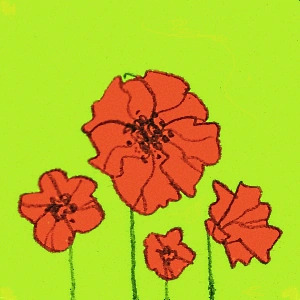
C's plan to "become gods" with Charlotte VS Charles' plan of "running away" with Anri


Scarlett's death in EP2 VS Vincent's death


Charlotte accidentally killing the magcats with junk food VS Charles being forced by Scarlett to feed his cat junk food


Charlotte getting her hair cut by bullies VS The bullied one getting her hair cut by bullies
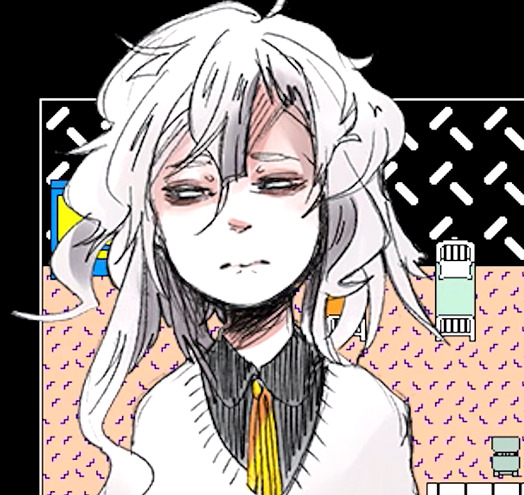

Anri kissing Charlotte while trying to calm her down by repeating "It's not my fault" VS Anri kissing Charles while trying to calm him down by repeating "It's not my fault"


#i mean it's not EVERY but most of them#if you wanna add some others feel free to reblog with them!!#hello charlotte childhoods end#charlotte wiltshire#hellocharlotte#hello_charlotte#hello charlotte#charles eyler#anri warhol#vincent wordsworth#scarlett eyler#etherane#charlotte q84#magcat#hello charlotte game#rpg maker game#rpg horror
742 notes
·
View notes
Text
so the reason why queen charlotte still dress so lavishly (and sort of out of the time) is because she is still reminiscing her time with king george when they were young and he hasn't gone fully mad

#im fine#IM FINE#reblogs are saying she did that so he could recognize her IM NOT WELL NOW#bridgerton#queen charlotte: a bridgerton story#tofutalks
642 notes
·
View notes
Text

"Tiny God's favorite doll just broke."
#my art#hello charlotte#hc#hellocharlotte#charlotte wiltshire#Charles Eyler#vincent fennell#C#redraw#it took a lot of time lol#HELLOOOOOOOOO ITS ME AGAIN <3#hiii moots#nice to see u all again#thanks for all the good reblogs :>
170 notes
·
View notes
Text



Why even draw if not to make jokes where the target audience is me and me alone
#genshin impact#genshin memes#genshin impact fanart#genshin#genshin fanart#genshin charlotte#genshin neuvillette#genshin lumine#genshin klee#genshin rosaria#I better not see any ships getting tagged in the reblogs#i also better not see any english dub hate either#I love Ray Chase Neuvillette's stupid little choked seagull laugh#it brings me so much joy
71 notes
·
View notes
Note
Who would win in a hand to hand combat (and knife) Jade or Valeria?? 🙌
INTERESTING QUESTION (ʘ ͜ʖ ʘ)
(this ask got me sketchin' ✍️✍️✍️)

Some points that I thought about :
Both of them are brolic fighters. The difference is, I think Valeria is more brutal while Jade uses more effective and sneaky attacks.
Valeria has the power advantage, but speed-wise, Jade has the lead.
Valeria is taller with a longer wingspan and It's an advantage. But Jade's defense is not to be messed with.
Jade uses Karambit knife which is very versatile in every angle + harder to get off of her hands.
Experience-wise, though Valeria is older, Jade started training at early age. Both are on par with each other.
Endurance - both Valeria and Jade were ex-special forces and ex-MI6 black agent with non-stop assignments. They can take any punches and still go at it.
Mental battle - Valeria will talk shit in the middle of the fight, but Jade will also clap back with British sarcasm. These two won't stop until the other is down for sure.
I can't really be certain 🤔🤔What do you guys think?
(heck yea I'll finish that art)
Edit : Forgot there's a poll feature on Tumblr wow. I wanna see who y'all bet on. Valeria or Jade? 👀 (don't take this too seriously alright)
#reblogging for the added poll#comment below 👀#they could be stopped only when Ghost and Alejandro came into the scene prolly#call of duty#call of duty modern warfare#cod mw#cod#cod mw22#art#charlotte jade le jardin#call of duty modern warfare 2022#valeria garza#el sin nombre#call of duty oc#cod oc#sleepy answers
524 notes
·
View notes
Note

My gift for your bday hope you like
and Don't worry my Charlie's paying
AHHHH?!?!?! THIS IS SO CUTE!!! they're both eating at a Burger King I love it, it is so adorable, especially the crowns! My Charlie would totally call yours her cooler older sister :'] And thank her for paying for the meal xD
Thank you so much </33 I'm so in love with your art man it is an honor seeing her in your artstyle
#north-noire asks#hidden hands au fanart#LOOK AT THEM THEYRE SO CUTE#im really flattered you guys like my silly girly charlie#charlie emily#charlotte emily#friends art#mutuals art#not my art#reblog
45 notes
·
View notes
Text



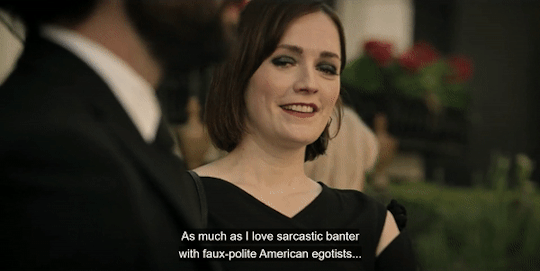
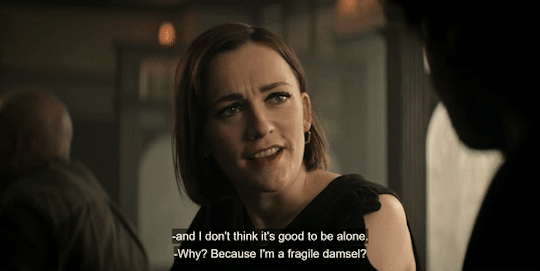
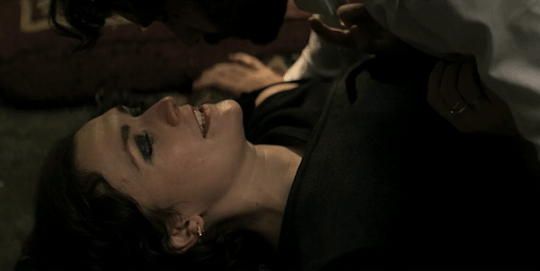
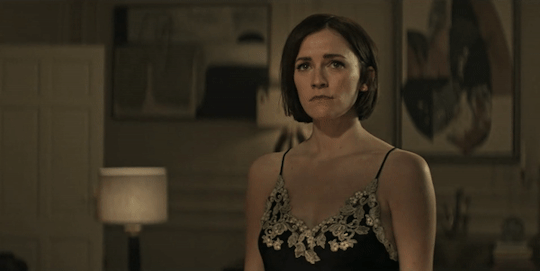
Favorite lines from Charlotte Ritchie as Kate Galvin / Lockwood in You season 4
#am I supposed to hate her? cuz I love her#no line in the last one but i love her expression#kate galvin#galvin! thank you first person to reblog! it’s galvin!!#you netflix#you#youedit#you spoilers#you netflix spoilers#joe goldberg#penn badgley#charlotte ritchie#kate you#kate lockwood#you season 4#netflix you#you s4#you season 4 part 1#you s4 spoilers#you s4 part 1
468 notes
·
View notes
Text

LUKE NEWTON BEING A "GENTLEMAN" AS COLIN BRIDGERTON IS....😤😤
#reblogging#previous tags:#.junie#bridgerton#bridgerton s3#bridgerton season 3#penelope featherington#colin bridgerton#colin x penelope#dailybridgerton#bridgerton edit#bridgertonedit#bridgertonblr#bridgerton spoilers#anthony bridgerton#bridgerton memes#bridgerton netflix#bridgerton season two#bridgerton siblings#romancing mister bridgerton#bridgerton season 2#violet bridgerton#bridgerton cast#bridgerton queen charlotte#bridgerton season three#kate sharma#anthony x kate#kate x anthony#anthony and kate#kate sheffield
149 notes
·
View notes
Text

i was trying to decide between reading a book i got from the library and ao3….girl there is wincest in this published graphic novel so i got a 2 for 1 deal
#the whiplash I got while reading this#and merthur underneath??#author i know what you are!!#charlotte reblogs#gender queer by maia kobabe#slay maia u get it#supernatural#sam winchester#dean winchester#samdean#sam and dean#spn#wincest#wincest wednesdays
96 notes
·
View notes
Text
Spoilers for Queen Charlotte: A Bridgerton Story (even though this will have little to do with the show and will devolve into a Stranger Things postulation that can be ignored).
So i watched Queen Charlotte and i could not help but think, "Damn, this woman does not like her 13 children," when her son broke into tears and all she could say was, "Sorrows and Prayers". Which, while iconic is really distant. And it was confirmed by the children, at least the eldest, when they tell her shes not a good mother.
But what really surprised me was the genuine surprise that they don't think she's done a lot for them.
And in her mind, she has. Once her eldest child had a child she stopped meddling in their lives. She allowed them to remain unwed and childless. The boys could love their commoners and married women. And in her head, she gave them freedom that she had never gotten.
However, she loved George. And George needed a lot of love and support that would have increased over the years and made sure no one would question him or his legitimacy she became responsible for a lot and thus shouldered a lot in order to become "His Queen" in that magnanimous way that she did.
And something had to be negatively impacted so she could achieve this for George, and sadly that meant her children, and those close to her, were neglected. She simply did not have room in her heart for to equally love one as much as she loved George —let alone 15/13 other children and a granddaughter.
#decided to leave this part as is and do the second part as a reblog#queen charlotte#queen charlotte a bridgerton story#bridgerton#charlotte x george
391 notes
·
View notes
Text

Queen Charlotte and Lady Danbury Fanart
#season 3 bridgerton#bridgerton netflix#period drama#queen charlotte#lady danbury#golda rosheuvel#queen charlotte wig#her wig took a while to draw#please like and reblog#please like my art#my art#bridgerton#bridgerton s3#bridgerton fanart#love their outfits#agatha danbury#ibis paint x#ibispaint art#art#artwork#digital art#drawings#illustration#look at that hair#queen charlotte x lady danbury
21 notes
·
View notes
Text
It can’t be…
No way.
Shit reads like a subplot from Control. (Remedy devs take note!)
Same energy at least.

TEN THOUSAND BEES!!!!!!!!!
As the shitpost foretold (unintentionally but still).
It’s a miracle! (In a twisted sort of way)
Except this time they’re already INSIDE!!!!
Fortunately the bees weren’t killed, but rather relocated to a sanctuary by beekeepers.
Thank goodness.
$20,000 dollars in damages.
I am impressed!
Feel free to reblog if you wish.
#dougie rambles#personal stuff#news#bees#save the bees#beekeepers#WTF#how does this even happen#nightmare fuel#ten thousand bees#it was foreseen#life imitates art#art imitates life#shitpost#monsters#or not#what sorcery is this#control#control 2019#control game#remedy entertainment#tangentially#north carolina#charlotte nc#beehive#this actually happened#feel free to reblog#honeycomb#fucking hell#what
25 notes
·
View notes